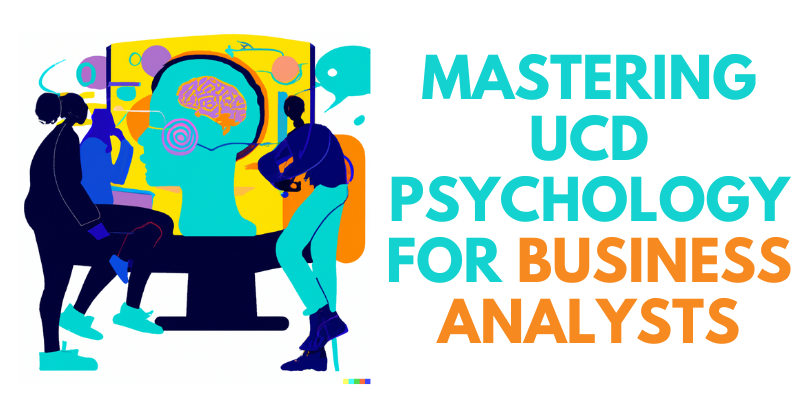In the world of business analysis, understanding the psychology of user-centered design is not just a bonus but a necessity. User-centered design (UCD) is concerned with developing goods and services that fulfil users’ requirements and expectations, resulting in a pleasant user experience. For business analysts (BAs), delving into the psychology behind UCD can be a game-changer. In this blog, we will look at the major principles of user-centered design psychology and how BAs may use this knowledge to flourish in their professions.
The Basics of User-Centered Design
Understanding the User
User-centered design starts with empathy. BAs, especially those pursuing an MBA In Analytics, need to put themselves in the shoes of the end-users, understanding their goals, preferences, and pain points.
Iterative Design
UCD is an iterative process. It involves continuous feedback and refinement. BAs must be willing to revisit and improve designs in response to user input and changing requirements.
The Psychology of User-Centered Design
Behavioral Psychology
Understanding user behavior is crucial in UCD. BAs must study behavioural psychology in order to forecast how people will engage with a product or service. This includes studying factors like motivation, habits, and decision-making processes.
Cognitive Psychology
Cognitive psychology helps BAs understand how users process information. This knowledge is vital for designing intuitive interfaces and user-friendly navigation. It involves studying memory, perception, and problem-solving.
Emotional Design
Emotions are important in the user experience. BAs should consider how a design makes users feel. Positive emotions can lead to greater user satisfaction and loyalty. Negative emotions can drive users away.
Applying Psychology to User-Centered Design
User Research
User research is a cornerstone of UCD. BAs need to conduct thorough research to gather insights into user behavior and preferences. Surveys, interviews, and usability testing are essential tools in this process.
Prototyping
Prototyping allows BAs to test design concepts and gather feedback early in the development process. It’s a practical application of UCD principles, enabling adjustments based on user responses.
Usability Testing
Usability testing entails watching consumers engage with a product or service. BAs can use this technique to identify pain points, confusing elements, or areas where improvements are needed.
The Benefits of UCD for BAs
Enhanced Decision-Making
Understanding the psychology of UCD equips BAs with the knowledge to make data-driven decisions. They can justify design choices based on user needs and expectations.
Improved Communication
BAs, especially those enrolled in MBA In Business Analytics Colleges In Chennai, who grasp the psychology of UCD can effectively communicate with designers, developers, and stakeholders. They may serve as a bridge between technical teams and end users, ensuring that everyone is on the same page.
Customer Satisfaction
Ultimately, UCD leads to higher customer satisfaction. Users who are satisfied are more likely to become loyal customers, which helps the company in the long run.
Conclusion
The psychology of user-centered design is a valuable asset for BAs, particularly those pursuing MBA Courses In Chennai. It empowers them to create solutions that resonate with users, drive customer satisfaction, and contribute to the overall success of a project. By understanding user behavior, cognitive processes, and emotions, BAs can bring a human-centered approach to their work, ensuring that the products and services they analyze and design truly meet the needs of the people they are intended for. In an increasingly user-centric world, this knowledge is not just an advantage; it’s a necessity for BAs looking to excel in their roles and make a meaningful impact on the businesses they serve.

